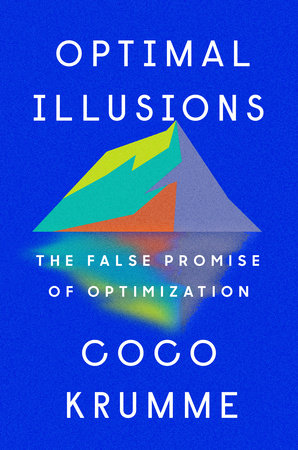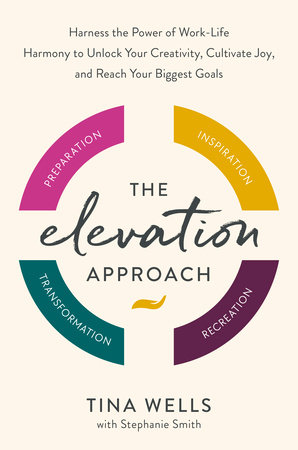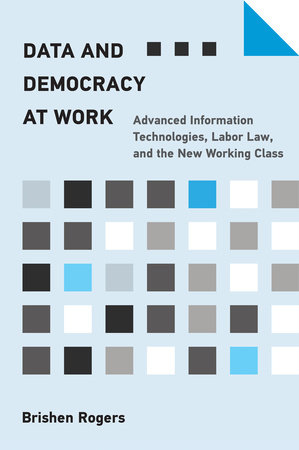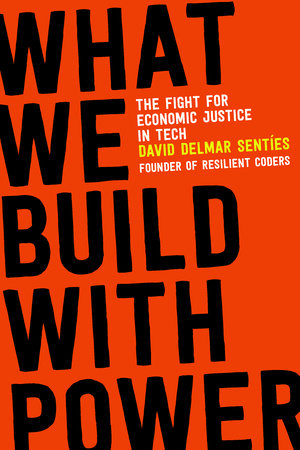Quick Summary of “The Secret of Culture Change” by Manoel Amorim, Carlos Júlio, and Jay B. Barney
One Sentence Summary
“The Secret of Culture Change” is a pragmatic guide to transforming organizational culture for enhanced performance and innovation.
Big Idea
The book’s central premise is that a successful cultural change in an organization is not just possible, but essential for staying competitive in a fast-evolving business world. It emphasizes understanding and reshaping organizational culture as a strategic asset.
Five Key Ideas
- Culture as a Core Business Strategy: The book argues that culture should be at the heart of business strategy, impacting every decision and action.
- Assessment and Understanding: It highlights the importance of accurately assessing an organization’s existing culture to understand its strengths and weaknesses.
- Leadership and Vision: A focus on how effective leadership can inspire and drive cultural change, emphasizing the role of a clear, shared vision.
- Employee Engagement: Strategies for engaging employees at all levels in the process of cultural transformation are explored.
- Sustaining Change: The book discusses methods for sustaining cultural change and integrating it into the fabric of the organization.
Actionable Advice
- Conduct thorough cultural assessments regularly.
- Align leadership with the desired cultural change.
- Foster open communication and employee involvement.
- Set clear, achievable goals for cultural transformation.
- Measure and celebrate progress to reinforce change.
About the Author
Manoel Amorim, Carlos Júlio, and Jay B. Barney are renowned experts in organizational strategy and culture, combining academic insight with practical business experience.
Read Next
For further reading, consider:
- “Corporate Culture and Performance” by John Kotter and James Heskett, focusing on the correlation between culture and business performance.
- “The Culture Code” by Daniel Coyle, which offers insights into building strong, cohesive teams.
- “Leading Change” by John Kotter, exploring the process of leading organizational change.
- “Drive” by Daniel H. Pink, discussing motivation and its impact on organizational culture.
In Depth
Culture as a Core Business Strategy
In “The Secret of Culture Change,” the authors passionately argue that culture isn’t just a part of the business strategy; it is the strategy. This idea is hammered home with clarity: culture drives everything in an organization, from decision-making to daily operations.
Think about culture as the company’s DNA. It’s not just about having a foosball table or free coffee. It’s how decisions are made, how people communicate, and what gets rewarded. The authors show that a strong culture isn’t a luxury; it’s a necessity for survival and success.
One detailed example from the book illustrates this perfectly. The authors describe a tech company that shifted its culture from a traditional, hierarchical model to a more agile and collaborative one. Initially, the company struggled with innovation and speed. But after the shift, they saw a remarkable improvement in both. The new culture encouraged open communication, rapid experimentation, and embraced failure as a learning tool. This wasn’t just a change in policy; it was a change in the company’s very essence.
The book is peppered with nuggets of wisdom, like this one:
“Culture isn’t just one aspect of the game—it is the game. In the end, an organization is nothing more than the collective capacity of its people to create value.”
This quote sums up the essence of the first key idea. It’s not just about the processes or the products; it’s about the people and the environment they create together.
The authors suggest practical ways to make culture the core of your business strategy. Start by defining what your ideal culture looks like. What values do you want to embody? How should your team interact? Then, look at your current culture. Where are the gaps? This isn’t just a leadership exercise. It involves everyone in the organization.
Once you’ve identified the gaps, it’s time to bridge them. This might involve training, redefining roles, or changing your recruitment strategy. The key is consistency. Your culture should be evident in everything you do, from how you conduct meetings to how you evaluate performance.
Another critical aspect is measurement. You can’t manage what you can’t measure. The authors provide examples of companies that have successfully quantified their culture change. They tracked everything from employee satisfaction to customer feedback, using these metrics to steer their cultural evolution.
In short, “Culture as a Core Business Strategy” is about recognizing that the soft stuff is actually the hard stuff. It’s about making culture as tangible and vital as your business plan. It’s a shift from viewing culture as a byproduct of success to seeing it as the driver of success. And as the book vividly demonstrates, this shift isn’t just theoretical; it’s practical, impactful, and absolutely essential.
Assessment and Understanding
Diving into the second key idea, the focus is on the critical role of assessing and understanding an organization’s existing culture. This step is vital for identifying what works and what needs change. The approach is straightforward: know your terrain before you navigate it.
The book gives an insightful example of a multinational corporation that undertook a comprehensive cultural assessment. This company, facing declining market share, realized that understanding its culture was key to reversing its fortunes. Through surveys, interviews, and workshops, they uncovered a culture of risk-aversion and internal competition that stifled innovation. This revelation was a game-changer. It led to targeted initiatives fostering collaboration and risk-taking, ultimately revitalizing the company’s innovative edge.
A striking quote from the book emphasizes this:
“To change a culture, you first have to understand it. You can’t navigate the terrain if you don’t have a map.”
This idea encapsulates the essence of this key point. Understanding your culture is like having a map in an unknown territory. It guides your steps, shows where you are, and helps plan where you want to go.
But how do you assess culture effectively? The authors provide practical advice. Start by asking the right questions. What are the unwritten rules that govern behavior in your organization? How do people react to new ideas or failure? What stories are celebrated and shared?
It’s not just about formal surveys. Observations and informal conversations can reveal a lot about an organization’s true culture. Look for patterns in behavior and decision-making. These patterns often speak louder than official statements or policies.
The authors caution against a one-size-fits-all approach. Every organization’s culture is unique, and so should be the method to understand it. Tailor your assessment to fit the specific context and nuances of your organization.
Post-assessment, the next step is interpretation. What do the findings mean? Here, the authors stress the importance of objectivity. It’s easy to be defensive or dismissive of negative aspects, but honesty is crucial for effective change.
Finally, communication is key. Share the findings with the entire organization. This transparency builds trust and sets the stage for meaningful change. It’s about creating a shared understanding of where the organization stands and where it needs to go.
In summary, the idea of assessment and understanding is about digging deep into the fabric of an organization. It’s about moving beyond surface-level perceptions to the core values, beliefs, and behaviors that define an organization’s culture. This deep dive isn’t just a diagnostic tool; it’s the foundation for any meaningful cultural transformation.
Leadership and Vision
Moving on to the next key idea, we delve into the crucial role of leadership and vision in driving cultural change. This idea is all about how leaders can shape, guide, and inspire a culture shift within their organizations.
The book offers a compelling example involving a retail company. The CEO recognized that for the company to thrive, it needed a shift from a sales-focused culture to a customer-centric one. This change started at the top. The CEO not only preached customer centricity but also modeled it by personally engaging with customers and employees. Leadership training programs were revamped to instill this new focus throughout the managerial ranks. This top-down approach was a resounding success, leading to increased customer loyalty and better sales.
A quote from the book encapsulates this idea well:
“Leaders are the architects of culture. Their vision becomes the blueprint for cultural transformation.”
This quote highlights the integral role of leaders in cultural change. They’re not just administrators; they’re visionaries and architects. They have the power to mold the very ethos of an organization.
But what makes a leader effective in this role? The book outlines several key attributes. First, leaders must have a clear and compelling vision. This vision should be more than a statement; it should be a vivid picture of what the future could look like. It needs to inspire and motivate, offering a clear direction for the entire organization.
Second, consistency is critical. Leaders must walk their talk. Every decision, action, and communication should reinforce the new vision and desired culture. This consistency builds credibility and trust, which are essential for people to buy into and commit to the change.
Third, leaders should be great communicators. They need to articulate the vision and the reasons for the change in a way that resonates with everyone in the organization. Communication should be frequent, transparent, and two-way. It’s about creating a dialogue, not just delivering a message.
The book also discusses the importance of empathy in leadership. Leaders need to understand the fears, challenges, and motivations of their people. This understanding enables them to tailor their approach, address concerns, and engage their team effectively.
Lastly, leaders should empower others. This means giving people the tools, resources, and autonomy they need to contribute to the cultural change. It’s about creating leaders at all levels of the organization.
In essence, the key idea of Leadership and Vision in cultural change is about leaders setting the course and leading by example. They are the catalysts and guardians of cultural transformation. Their vision, consistency, communication, empathy, and empowerment are what drive the change from an abstract concept to a lived reality.
Employee Engagement
Now, let’s tackle the fourth key idea: Employee Engagement. This part of the book emphasizes how crucial it is for employees at all levels to be actively involved in the process of cultural change. It’s not just a top-down approach; it’s a collective effort.
A standout example in the book is a healthcare organization that faced significant operational challenges. To address these, the leadership decided to involve employees in the process of cultural transformation. They established cross-functional teams that included staff from various levels, giving them the responsibility to identify issues and develop solutions. This approach not only led to practical, workable improvements but also fostered a sense of ownership and commitment among employees. The result was a more collaborative, efficient, and motivated workforce.
The book puts it succinctly:
“Engaged employees are not just workers; they are the co-creators of your culture.”
This quote drives home the point that employee engagement is not optional in cultural change; it’s essential. Employees are not passive recipients of cultural directives; they are active participants who shape and sustain the culture.
But how do you engage employees effectively? First, the book suggests creating opportunities for employees to voice their opinions and ideas. This could be through surveys, town hall meetings, or informal discussions. It’s about making them feel heard and valued.
Second, involve employees in decision-making processes, especially those that directly affect their work. This involvement can range from small process changes to major strategic decisions. When employees have a say in decisions, they are more likely to be committed to the outcomes.
Third, recognize and celebrate contributions. Acknowledgment and appreciation go a long way in boosting morale and motivation. Celebrating small wins and milestones in the journey of cultural change keeps the momentum going.
Another important aspect is providing training and development opportunities. This helps employees acquire the skills and knowledge they need to thrive in the new culture. It also shows that the organization is invested in their growth and success.
Lastly, the book highlights the need for transparency. Keep employees informed about the progress and challenges of the cultural change initiative. This openness builds trust and reinforces the sense of a shared journey.
In summary, the idea of Employee Engagement in cultural change is about harnessing the collective energy, creativity, and commitment of the workforce. It’s about moving beyond the traditional top-down approach to a more inclusive, participatory model. This engagement is not just about getting buy-in; it’s about building a culture together, where every employee feels like they have a stake in its success.
Sustaining Change
The final key idea is about Sustaining Change. This part is all about making the cultural shift stick. It’s not just about initiating change but ensuring it becomes a permanent part of the organization.
The book brings this to life with the story of a manufacturing company. After a successful shift to a more collaborative and innovative culture, they faced the challenge of maintaining this change. Their solution was a continuous feedback loop where employees could regularly voice their experiences and suggestions for further improvements. They also implemented a system of regular cultural audits to monitor the health of the new culture. These efforts kept the momentum alive and prevented a slide back into old habits.
A poignant quote from the book underscores this:
“Cultural change is not a sprint; it’s a marathon. It requires persistence, resilience, and regular reinforcement.”
This quote captures the essence of sustaining change. It’s a long-term commitment, requiring ongoing effort and attention.
So, how do you make sure the change sticks? First, the book advises establishing new norms and behaviors as standard practice. This could involve updating policies, procedures, and performance metrics to align with the new culture.
Second, leadership must continue to lead by example. Consistent behavior from the top reinforces the importance of the new culture and sets a standard for everyone.
Third, it’s crucial to keep communicating. Regular updates on progress, challenges, and successes keep the change at the forefront. It reminds everyone that the cultural shift is an ongoing priority, not just a completed project.
Another key aspect is integrating the new culture into all aspects of the organization. This means aligning HR practices like hiring, training, and promotions with the new cultural values. It ensures that the culture is embedded in the very fabric of the organization.
The book also highlights the importance of flexibility. Be prepared to adjust strategies as needed. Cultural change is not a linear process; it’s dynamic and requires adaptation to new challenges and opportunities.
Lastly, celebrate the milestones. Recognizing and celebrating progress reinforces the value of the changes and boosts morale. It’s a way of saying, “We’re on the right track, let’s keep going.”
In conclusion, Sustaining Change is about embedding the new culture deeply and permanently into the organization. It’s a continuous process of reinforcement, adjustment, and celebration. This key idea reminds us that the work of cultural change is never really done; it’s an evolving journey that requires constant care and attention.
Actionable Advice
- Conduct Cultural Assessments: Regularly evaluate your organization’s culture to understand its strengths and weaknesses.
- Align Leadership: Ensure leaders are committed to and exemplify the desired cultural change.
- Foster Open Communication: Encourage transparency and dialogue at all levels to involve everyone in the change process.
- Set Clear Goals: Define specific, achievable objectives for cultural transformation.
- Involve Employees: Engage staff in decision-making and problem-solving to foster a sense of ownership.
- Celebrate Progress: Acknowledge and reward small wins to maintain momentum and morale.
- Train and Develop: Offer learning opportunities that align with the new culture to equip employees for success.
- Reinforce New Behaviors: Regularly reinforce the desired behaviors through policies and everyday practices.
- Stay Flexible: Be prepared to adjust strategies in response to feedback and changing circumstances.
- Keep Communicating: Continuously share updates and progress to keep the focus on the cultural journey.
About the Author
Manoel Amorim, Carlos Júlio, and Jay B. Barney are renowned for their expertise in organizational strategy and culture. Amorim, a seasoned entrepreneur, has a rich background in transforming businesses, known for his innovative approach to leadership and change management. Júlio, a professor and business consultant, brings a wealth of knowledge from his experience in corporate leadership and academic insights. He’s recognized for his practical methods in driving organizational success. Barney, an esteemed academic, is celebrated for his research in strategic management and competitive advantage. His work is pivotal in understanding how firms achieve and sustain superior performance. Together, they combine real-world business acumen with deep theoretical knowledge, making them a formidable team in the field of organizational culture. Their beliefs center around the power of culture as a strategic asset, the importance of leadership in shaping organizational identity, and the crucial role of employee engagement in driving successful change. They advocate for a holistic approach to culture change, emphasizing the need for continuous adaptation and innovation in today’s dynamic business landscape.
Read These Next
You might like these similar books
- “Corporate Culture and Performance” by John Kotter and James Heskett
- “The Culture Code” by Daniel Coyle
- “Leading Change” by John Kotter
- “Drive” by Daniel H. Pink
- “Good to Great” by Jim Collins
FAQ
Q: What is the main focus of “The Secret of Culture Change”?
A: The book focuses on transforming organizational culture for enhanced performance and innovation.
Q: Who should read this book?
A: It’s ideal for business leaders, managers, HR professionals, and anyone interested in organizational development.
Q: Does the book provide practical advice for implementing change?
A: Yes, it offers actionable strategies for assessing, shaping, and sustaining cultural change in organizations.
Q: Can small businesses benefit from the insights in this book?
A: Absolutely. The principles outlined are applicable to organizations of all sizes.
Q: Is prior knowledge of organizational theory required to understand the book?
A: No, the book is written in simple language, making it accessible to readers without a background in organizational theory.
Q: Are real-world examples included in the book?
A: Yes, the book includes detailed examples from various organizations to illustrate key concepts.
Q: How does the book approach the role of leadership in culture change?
A: It emphasizes the importance of leadership and vision in driving and sustaining cultural change.







